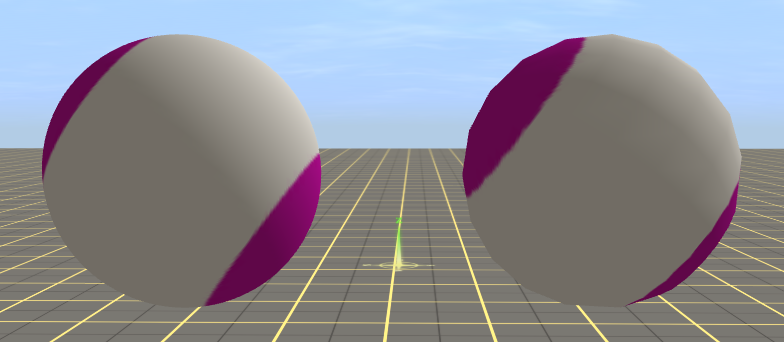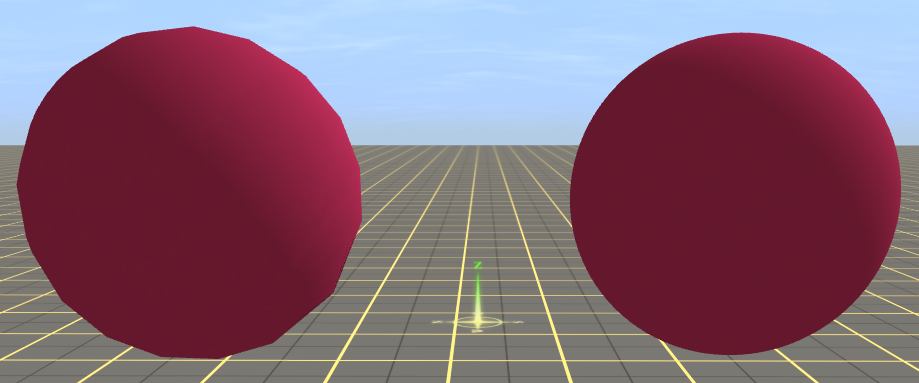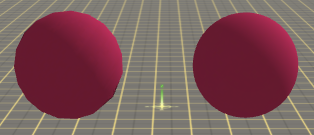LOD Example
m |
m |
||
| Line 28: | Line 28: | ||
[[File:Distant LOD with normal map.png]] | [[File:Distant LOD with normal map.png]] | ||
| + | |||
| + | |||
| + | |||
| + | ==Downloads== | ||
| + | * [[Media:LOD Example without normal map.cdp]] | ||
| + | * [[Media:LOD Example with normal map.cdp]] | ||
Latest revision as of 18:40, 17 March 2013
The following images seek to illustrate how LOD works and why the use of a normal map is important. Each image includes both a high-detail sphere (~10,000 polygons) and a low-detail sphere (~300 polygons.)
[edit] LOD without a normal map
The simplest approach to LOD is to just build a second model which maintains the same approximate silhouette as the original but significantly reduces the polygon count. In this example, the same diffuse texture is used for both models, and no normal map is applied. The screenshot was taken at a range which is clearly inappropriate for the low LOD- this is deliberate to illustrate the differences between the two models. Some points to observe:
- The silhouette of the low-detail sphere (right) has an obvious reduction in detail. The smooth curve of the original has given way to a somewhat jagged edge.
- The interior of the object also looks blocky as you can clearly see how the lighting changes with each polygon in the sphere.
[edit] LOD with a normal map
With a little extra effort, you can build a normal map from the high-detail object and apply it to the lower-detail version (left). This allows the object to be lit as if the missing detail was still present, improving the visual experience. The next screenshot is taken at a similar range to the previous example, but the use of a normal map substantially improves the quality of the result. You will note that while the edge lines are still jagged, the interior appears to be substantially higher in quality.
Now let's take a look at the same object at a more reasonable distance. If you look closely, you can tell that the edges are not quite as smooth as the original- but it's acceptable for many purposes.
And at extreme range, it's really hard to spot any difference at all, despite the fact that the low detail model has only 3% of the original's polygon count.



